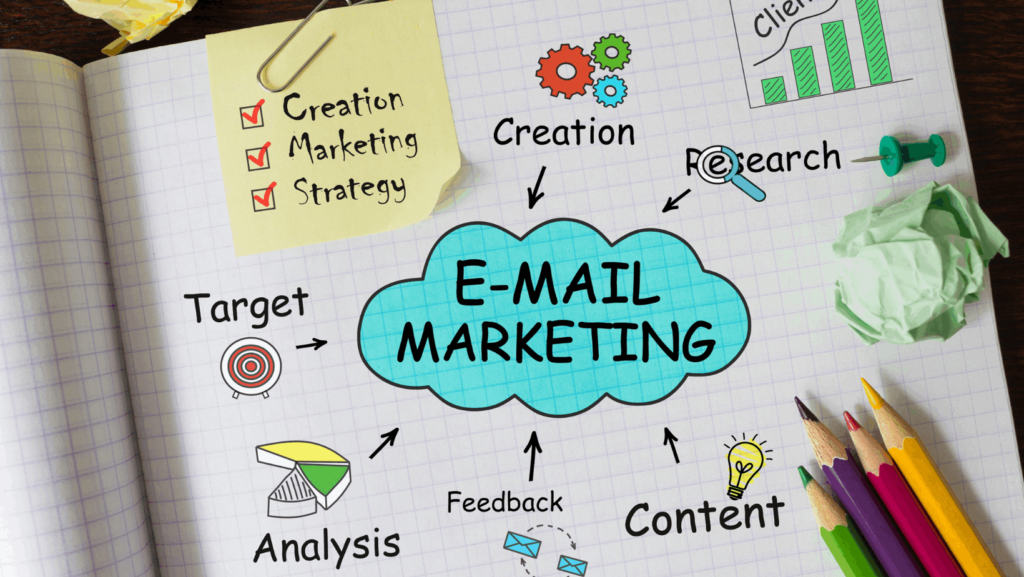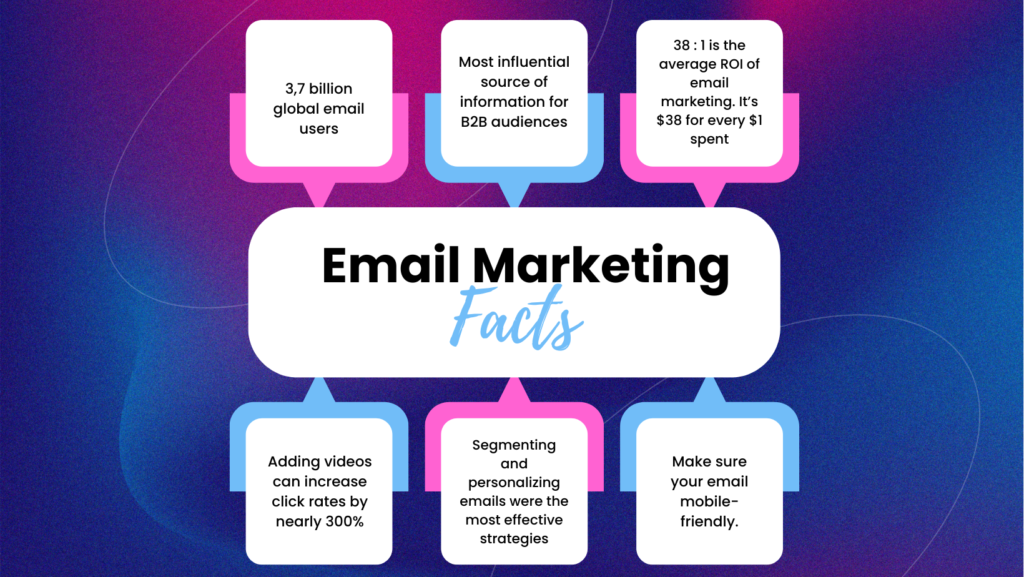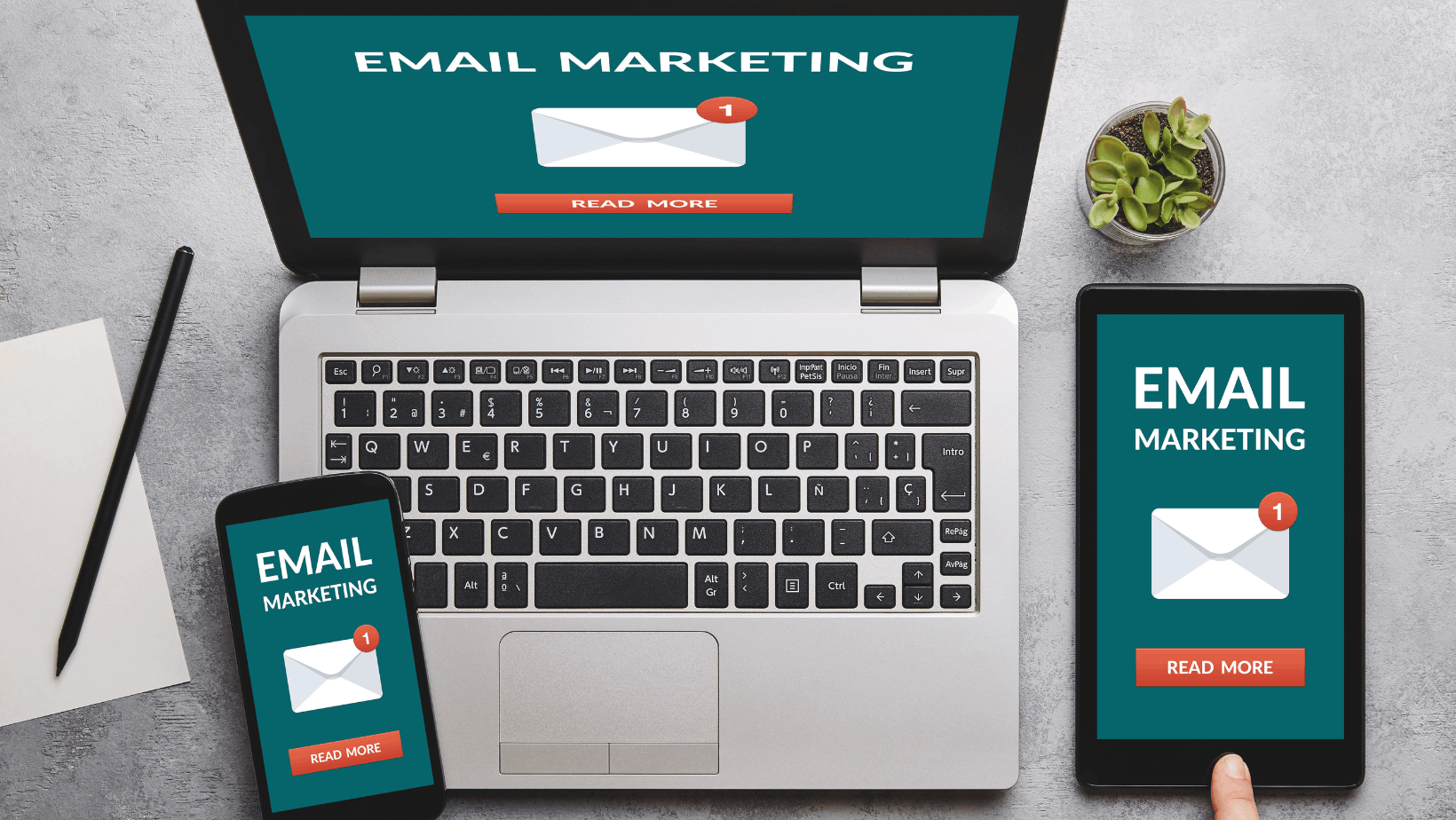8 Tips to Create a Successful Email Marketing Campaign
Email marketing is one of the most effective ways to reach your target audience and grow your business. But with so much competition out there, it can be tough to stand out from the crowd. That’s where this blog post comes in.
In this post, I’ll share my top tips for creating a successful email marketing campaign. I’ll cover everything from defining your goals to writing engaging emails to tracking your results.
So whether you’re a beginner or a seasoned email marketer, I encourage you to read on and learn how to create email marketing campaigns that convert.
Table of Contents
What is Email Marketing?
Email marketing is the process of sending emails to a group of people who have opted in to receive your emails. These emails can be used to promote your products or services, share news and updates, or simply stay in touch with your customers.
Why Email Marketing is Important?
Email marketing is important for a number of reasons. First, it is a direct channel of communication. When you send an email, you are reaching your subscribers directly in their inbox. This means that your message is more likely to be seen and read than if you were trying to reach them through other channels, such as social media or paid advertising.
Second, email marketing is highly targeted. You can segment your email list based on a variety of factors, such as interests, demographics, and purchase history. This allows you to send more relevant and personalized emails to each group of subscribers, which will increase your open rates and click-through rates.
Third, email marketing is measurable. You can track the results of your email marketing campaigns using a variety of metrics, such as open rates, click-through rates, and conversions. This information can help you improve your campaigns over time and make sure you’re getting the most out of your investment.
Benefits of Email Marketing Campaign

Email marketing campaign offers a number of benefits for businesses, including:
- Increased sales: Email marketing campaigns can help you increase sales by promoting your products or services to your subscribers.
- Improved brand awareness: Email marketing campaigns can help you improve brand awareness by keeping your company top of mind with your subscribers.
- Genuine connections: Email marketing campaigns can help you build genuine connections with your subscribers by providing them with valuable content and offers.
- Increased customer loyalty: Email marketing campaigns can help you increase customer loyalty by providing your subscribers with a personalized experience.
- Cost-effective: Email marketing campaign is a cost-effective way to reach a large audience.
If you’re looking for a way to reach your target audience, build relationships with your customers, and grow your business, email marketing is a great option.
8 Tips to Create a Successful Email Marketing Campaign
1. Setting Goals for Your Email Campaign
The first step in setting goals for your email marketing campaign is to define your objectives. What do you want to achieve with your campaign? Do you want to:
- Grow your email list?
- Increase brand awareness?
- Drive more sales?
- Generate leads?
- Improve customer retention?
Once you know your objectives, you can start to develop specific goals for your campaign.
Identifying target audience:
The next step is to identify your target audience. Who are you trying to reach with your email campaign? What are their interests? What are their needs and pain points?
Once you know your target audience, you can tailor your emails to their specific interests and needs. This will help you to improve your open rates, click-through rates, and conversion rates.
Setting measurable goals:
Your goals should be measurable. This means that you should be able to track and measure your progress towards your goals. For example, if your goal is to increase brand awareness, you could track the number of website visits from your email subscribers.
Measurable goals will help you to see how successful your email marketing campaign is and make necessary adjustments to improve your results.
Here are some examples of SMART goals for email marketing campaign:
- Grow email lists by 20% in the next 3 months.
- Increase brand awareness by 10% in the next 6 months.
2. Building a Targeted Email List
The first step in any successful email marketing campaign is to build a targeted email list. This means collecting email addresses from people who are likely to be interested in your products or services.
There are many ways to build an email list. Some common methods include:
- Adding an opt-in form to your website: This is a simple way to collect email addresses from visitors to your website. When someone signs up for your email list, you can offer them a free ebook, a discount, or some other incentive.
- Running social media contests: This is a great way to generate excitement and engagement around your brand. When someone enters your contest, you can ask them to provide their email address in order to be eligible to win.
- Hosting webinars or events: This is a great way to connect with potential customers and build relationships. When someone registers for your event, you can ask them to provide their email address so you can send them follow-up information.
Importance of Quality over Quantity:
It’s important to remember that quality is more important than quantity when it comes to building an email list. You’d rather have a smaller list of highly engaged subscribers than a large list of people who never open your emails.
There are a few things you can do to ensure that you’re collecting quality email addresses:
- Only collect email addresses from people who have opted in to receive your emails.
- Make sure your opt-in forms are clear and concise.
- Offer a valuable incentive for people to sign up for your email list.
Creating Opt-In Forms and Landing Pages:
Once you’ve decided on the methods you’ll use to collect email addresses, you need to create opt-in forms and landing pages.
An opt-in form is a simple form that people can use to sign up for your email list. It should include a headline, a call to action, and a place for people to enter their email address.
A landing page is a web page that is specifically designed to collect email addresses. It’s often used in conjunction with an opt-in form.
When creating opt-in forms and landing pages, it’s important to use clear and concise language. You should also make sure that your forms are easy to use and navigate.
Strategies for Growing Your Subscriber Base:
Once you’ve created your opt-in forms and landing pages, you need to find ways to get people to sign up for your email list.
Here are a few strategies you can use:
- Promote your opt-in forms and landing pages on your website.
- Share your opt-in forms and landing pages on social media.
- Run email marketing campaigns..
- Partner with other businesses.
By following these strategies, you can grow your email list and reach more potential customers.
3. Crafting Compelling Email Content
Make your email content interesting and informative:
Your subscribers are more likely to open and read your emails if they’re about topics that they’re interested in. So, try to write about things that your subscribers will find valuable or interesting. You can also use strong visuals to break up the text and make your email more visually appealing.
Write a clear, concise, and attention-grabbing subject line:
The subject line is the first thing your subscribers will see, so make sure it’s clear, concise, and attention-grabbing. Avoid using all caps or exclamation points, as these can make your subject line look spammy. And always make sure your subject line accurately reflects the content of your email.
Keep your email copy short and to the point:
People are busy, so they don’t have time to read long emails. Keep your email copy short and to the point, and use clear and concise language. Use strong calls to action to encourage your subscribers to take the desired action, such as visiting your website, making a purchase, or signing up for your newsletter.
Use personalization and segmentation to make your emails more targeted:
Personalization and segmentation are two powerful tools that can help you create more effective email marketing campaigns. Personalization involves using subscriber data to tailor your emails to each individual contact.
This can be done by using their name, location, or past purchase history in your subject lines, email copy, or calls to action. Segmentation involves dividing your subscribers into groups based on common interests, demographics, or purchase history.
This allows you to send more targeted emails that are more likely to be relevant and engaging to your subscribers.
4. Designing Effective Email Templates
Designing Effective Email Templates:
An email template is a pre-designed email that you can use to send out marketing messages to your subscribers. Email templates can save you time and effort, and they can also help you create more consistent and professional-looking emails.
When designing an email template, there are a few things you’ll need to keep in mind:
- Your brand identity: Your email template should reflect your brand identity. This means using your brand colors, fonts, and logos.
- Your target audience: Your email template should be designed for your target audience. This means using language and images that they’ll find relevant and interesting.
- Your goals: What do you want your email template to achieve? Do you want to increase website traffic, generate leads, or boost sales? Your template should be designed to help you achieve your goals.
Choosing the Right Email Template:
There are a number of different email templates available online. When choosing an email template, there are a few things you’ll need to consider:
- Your budget: Email templates can range in price from free to hundreds of dollars. Choose a template that fits your budget.
- Your needs: Do you need a template for a newsletter, a promotional email, or a welcome email? Choose a template that meets your specific needs.
- Your skills: If you’re not comfortable editing HTML code, choose a template that’s easy to customize.
Mobile-Friendly Design Considerations:
More and more people are reading emails on mobile devices. This means that your email template needs to be mobile-friendly. When designing your email template, keep the following in mind:
- Use a responsive design: A responsive design means that your email template will automatically adjust to the size of the screen it’s being viewed on.
- Use large fonts and images: People on mobile devices have smaller screens, so you need to use large fonts and images so that your email is easy to read and understand.
- Avoid using too much text: People on mobile devices are more likely to scan emails than read them word-for-word. Keep your email copy short and to the point.
Incorporating Brand Elements and Visuals:
Your email template should incorporate your brand elements and visuals. This means using your brand colors, fonts, and logos, as well as images that are relevant to your business. When using images in your email template, be sure to choose high-quality images that are relevant to your message.
5. Planning Email Campaigns for Different Stages of the Customer Journey
The customer journey is the process that a customer goes through from the moment they first become aware of your brand to the moment they become a loyal customer. There are four main stages of the customer journey:
- Awareness: In the awareness stage, the customer is just starting to learn about your brand. They may have seen an ad for your product or service, or they may have heard about you from a friend or colleague.
- Consideration: In the consideration stage, the customer is starting to think about whether or not they want to buy your product or service. They may be doing research online, reading reviews, or comparing different options.
- Decision: In the decision stage, the customer is ready to make a purchase. They have decided that they want your product or service, and they are now comparing different pricing options and making a final decision.
- Loyalty: In the loyalty stage, the customer is a repeat buyer. They are happy with your product or service and they are likely to continue doing business with you in the future.
When planning email campaigns, it’s important to target each stage of the customer journey.
For example, you might send a welcome email to new subscribers, a nurturing email series to leads who have recently visited your website, or a re-engagement email to inactive subscribers.
Welcome emails for new subscribers:
A welcome email is the first email that you send to a new subscriber. It’s a great opportunity to introduce yourself and your business, and to thank them for signing up for your email list.
Your welcome email should include the following information:
- A brief introduction to your business
- A link to your website
- A call to action, such as asking subscribers to follow you on social media or to sign up for your newsletter
Nurturing leads with drip campaigns:
A drip campaign is a series of emails that are sent to subscribers over time. Drip campaigns are a great way to nurture leads and keep them engaged with your business.
When creating a drip campaign, you’ll need to determine the following:
- The length of the campaign: How many emails will you send in your campaign?
- The frequency of the emails: How often will you send emails?
- The content of the emails: What information will you include in your emails?
Re-engagement emails for inactive subscribers:
Inactive subscribers are subscribers who haven’t opened or clicked on any of your emails in a while. Re-engagement emails are a great way to reconnect with these subscribers and bring them back into the fold.
Your re-engagement emails should include the following information:
- A reminder of who you are and what you do
- A call to action, such as asking subscribers to open a recent email or to visit your website
- A discount or promotion, to encourage subscribers to take action
6. Timing and Frequency of Email Campaigns

The timing and frequency of your email marketing campaigns are important factors in determining their success. If you send your emails too often, your subscribers may unsubscribe. If you send them too infrequently, they may forget about you.
There is no one-size-fits-all answer to the question of how often you should send emails. The best frequency will vary depending on your industry, your target audience, and your goals.
However, there are a few general guidelines that you can follow:
- Send emails on a regular schedule: Your subscribers will come to expect your emails, and they’ll be more likely to open them if they know when to expect them.
- Avoid sending emails too often: If you send your emails too often, your subscribers may unsubscribe. A good rule of thumb is to send no more than 1-2 emails per week.
- Test different sending times: Experiment with different sending times to see what works best for your audience. Some people may be more likely to open your emails in the morning, while others may be more likely to open them in the evening.
Determining the Best Sending Time:
The best sending time for your email campaigns will vary depending on your audience. However, there are a few general guidelines that you can follow:
- Send emails when your subscribers are most likely to be online: This may be during the workday or in the evening, depending on your audience.
- Avoid sending emails on weekends: Weekends are typically a time when people are busy with other activities, so they may be less likely to open your emails.
- Test different sending times: Experiment with different sending times to see what works best for your audience.
Recommended Email Frequency:
The recommended email frequency will vary depending on your industry, your target audience, and your goals. However, a good rule of thumb is to send no more than 1-2 emails per week.
If you send your emails too often, your subscribers may unsubscribe. If you send them too infrequently, they may forget about you.
It’s important to test different email frequencies to see what works best for your audience. You can use email marketing analytics tools to track your open rates, click-through rates, and unsubscribe rates to see how your subscribers are responding to your email frequency.
Testing and Analyzing Engagement Metrics:
It’s important to test and analyze your email campaigns to see what’s working and what’s not. You can use email marketing analytics tools to track your open rates, click-through rates, and unsubscribe rates.
You can also use surveys and polls to get feedback from your subscribers. This feedback can help you improve your email marketing campaigns and make them more effective.
Here are some additional tips for testing and analyzing your email campaigns:
- Track your open rates: This will tell you how many people are opening your emails.
- Track your click-through rates: This will tell you how many people are clicking on the links in your emails.
- Track your unsubscribe rates: This will tell you how many people are unsubscribing from your email list.
- Use surveys and polls to get feedback from your subscribers: Ask them what they like and dislike about your emails, and what you can do to improve them.
By testing and analyzing your email marketing campaigns, you can make sure that they’re effective and that they’re meeting your goals.
7. Incorporating Call-to-Action (CTA) Strategies
A call-to-action (CTA) is a statement that tells your subscribers what you want them to do. It can be a button, a link, or a phrase.
CTAs are important because they tell your subscribers what you want them to do and make it easy for them to do it.
There are a few things to keep in mind when incorporating CTA strategies into your email campaigns:
- Make sure your CTA is clear and concise: Your subscribers should be able to understand what you want them to do without having to read through a lot of text.
- Make your CTA stand out: Your CTA should be visually appealing and easy to find.
- Make your CTA relevant to the content of your email: Your CTA should be related to the information that you’re presenting in your email.
Types of Effective CTAs:
There are a few different types of CTAs that can be effective in email marketing campaigns.
- Button CTAs: Button CTAs are the most common type of CTA. They are typically short and to the point, and they are easy for subscribers to click on.
- Link CTAs: Link CTAs are another type of CTA that can be effective. They are typically longer than button CTAs, and they can be used to direct subscribers to a specific website page or landing page.
- Phrase CTAs: Phrase CTAs are less common than button or link CTAs, but they can be effective if used correctly. They are typically short phrases that tell subscribers what you want them to do.
8. Email Marketing Mistakes to Avoid
There are a few common email marketing mistakes that can hurt your deliverability and engagement. Here are a few to avoid:
- Sending unsolicited emails: Sending emails to people who haven’t opted-in to receive your emails is a surefire way to get your emails marked as spam.
- Using spammy subject lines: Subject lines that are too promotional, use all caps, or contain irrelevant keywords are more likely to be marked as spam.
- Sending too many emails: Sending too many emails to your subscribers can quickly lead to unsubscribes and spam complaints.
- Not segmenting your list: Segmenting your list allows you to send more relevant and targeted emails to your subscribers.
- Not personalizing your emails: Personalizing your emails with your subscribers’ names and interests can help to improve open rates and click-through rates.
- Including irrelevant or offensive content: Including irrelevant or offensive content in your emails can lead to unsubscribes and spam complaints.
- Not providing an unsubscribe link.
Preventing Unsubscribe and Spam Complaints:
Here are a few things you can do to prevent unsubscribe and spam complaints:
- Get permission before you add people to your email list: Make sure that people have opted-in to receive your emails before you add them to your list.
- Use clear and concise subject lines: Subject lines that are clear and concise are less likely to be marked as spam.
- Avoid sending irrelevant or offensive content: Including irrelevant or offensive content in your emails can lead to unsubscribes and spam complaints.
- Provide an unsubscribe link in every email.
- Respect your subscribers’ wishes.
By avoiding these common email marketing mistakes and pitfalls, you can improve your email deliverability and engagement.
Conclusion:
If you’ve read our blog post on how to use email marketing effectively, you’ve learned a lot about the benefits of email marketing campaigns, how to plan your campaigns, and how to create engaging emails. Now it’s time to put your knowledge into practice!
Here are a few final tips to help you get started with email marketing campaign:
- Start with a strong email list
- Plan your campaigns carefully
- Create engaging emails
- Use a strong subject line
- Personalize your emails
- Include a call to action
- Test and optimize your campaigns
By following these tips, you can create email marketing campaigns that are effective and engaging.
Here’s a bonus tip for you:
Be patient: Email marketing is a long-term game. Don’t expect to see results overnight. Just keep at it, and you’ll eventually see the benefits.
So what are you waiting for? Start using email marketing to grow your business today!
Good Luck!

